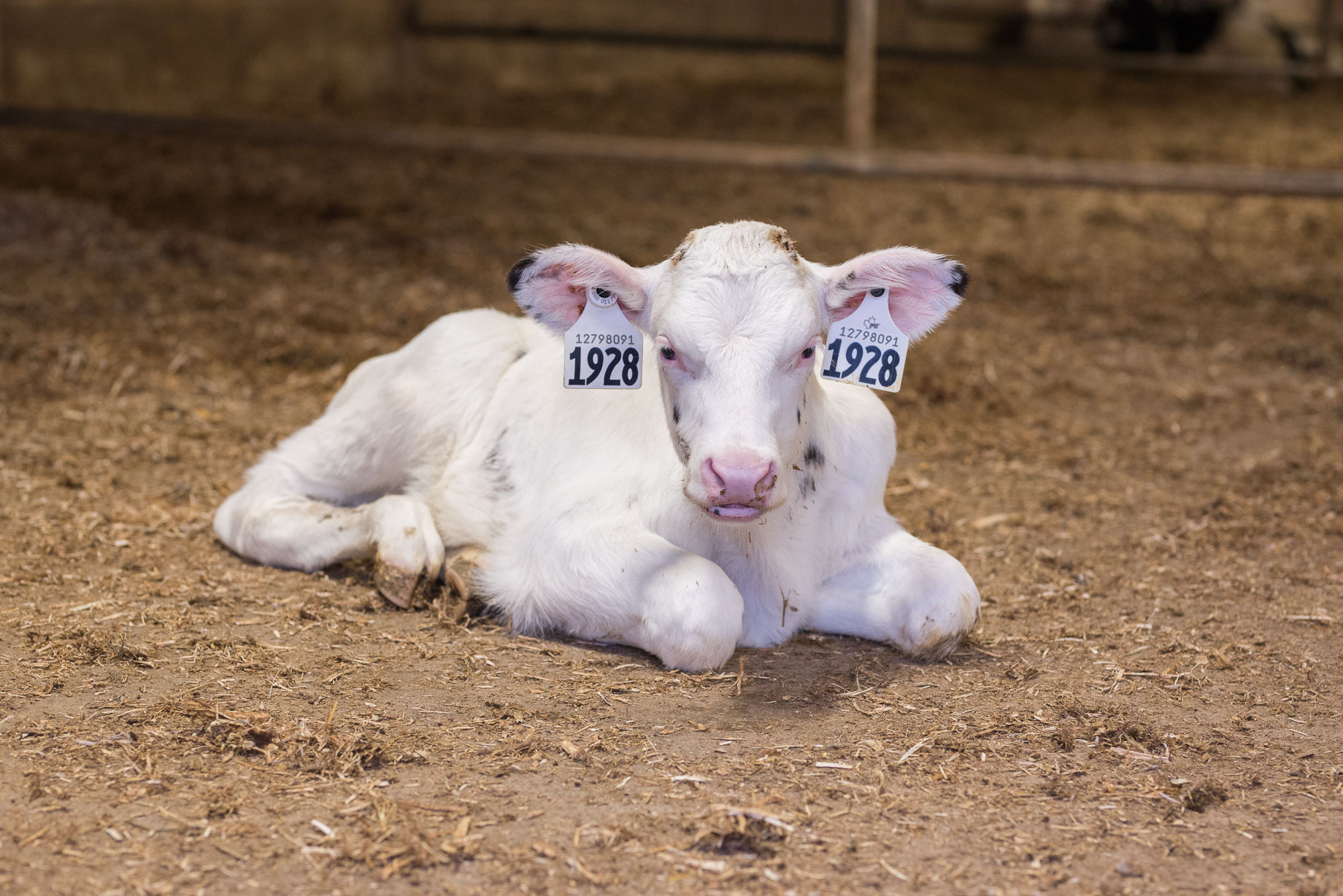cross-sucking in dairy calves
The November 2013 issue of Ontario Dairy Farmer had an excellent article regarding cross-sucking in dairy calves. For years it was thought that hunger was the primary cause of this behaviour. But it was long recognized that it never occurred before a meal (when calves should be hungrier), always afterwards. It is common in free-choice milk feeding systems such as in robotic and acidified feeding programs, and these calves are definitely less hungry than calves limit fed two or three times daily in hutches or individual pens. This is because in these free-choice systems, calves are group-housed where they have the opportunity to cross-suck. In hutch or individual pen rearing systems, calves are raised separately so they are physically prevented from cross-sucking (unless the hutches are placed too close together).
The most common locations calves cross-suck are the mouth, ears, navel, tail, and scrotal (bulls) or udder (heifers) areas of other calves. Most cross-sucking occurs within the first 10 minutes after a meal. It is more common in bucket feeding systems versus teat feeding systems (nipple bottle; robotic feeder; acidified tub feeders; nipple pails). It is never seen when the calf is reared by its mother (as on beef farms) where the calf can suckle whenever it pleases, and as long as it pleases. If not prevented, it can result in inter-sucking (cattle sucking the udders of heifers and cows), milk stealing after weaning, udder damage, mastitis, milk loss and culling of animals.
So, what causes this behaviour?
It seems to be promoted by the consumption of milk or milk replacer. It still occurs if calves are fed water or calf starter added to water, but it is much less common and it is much less intense. Specifically, it seems to be stimulated by the presence and concentration of lactose in milk or milk replacer. The lactose appears to stimulate the feeling of, and intensity of hunger. If the milk meal is short (even if the volume is high), the calf still feels hungry for a period of time after the meal. However, if the calf is allowed to continue to suckle a teat (even a dry teat), the degree of hunger diminishes with time. After 10-15 minutes of dry teat sucking, the calf no longer feels hungry, and therefore no longer wants to suck. The biggest reason why bucket feeding leads to more cross-sucking is because calves can consume large amounts of milk in a very short period of time, long before the hunger urge has passed. They still feel hungry, and consequently have a strong urge to suck until the feeling of hunger subsides. If they are housed in hutches or individual pens, you will often see them sucking the side or rim of the buckets, or any other suitable object in their surroundings.
So, what can you do to prevent or diminish cross-sucking?
1. If you feed with a nipple bottle, leave the bottle with the calf for at least 10-15 minutes after feeding to allow it to dry suckle the nipple
2. If you feed with a bucket, change to a nipple bucket and leave it with the calf
as in # 1.
3. If you are using an acidified "mob" or "group" feeding system, provide lots of nipples so calves can suck longer, and be less likely to be displaced from the nipple before the feeling of hunger subsides, by other calves in the group
4. If you have a robotic feeding system, design a “swing gate system” that keeps the calf in the milk stall until she has sufficient “dry teat” sucking time to lose the feeling of hunger
5. Reduce the size of the nipple orifice in all teat or nipple systems. This will prolong the duration of the meal; perhaps long enough to prevent cross-sucking
6. Feed hay at the end of the meal, and in group systems, have fresh hay available at all times
7. Provide non-nutritive (dry teats or nipples) for calves to suck after meals
(RSLVS)

